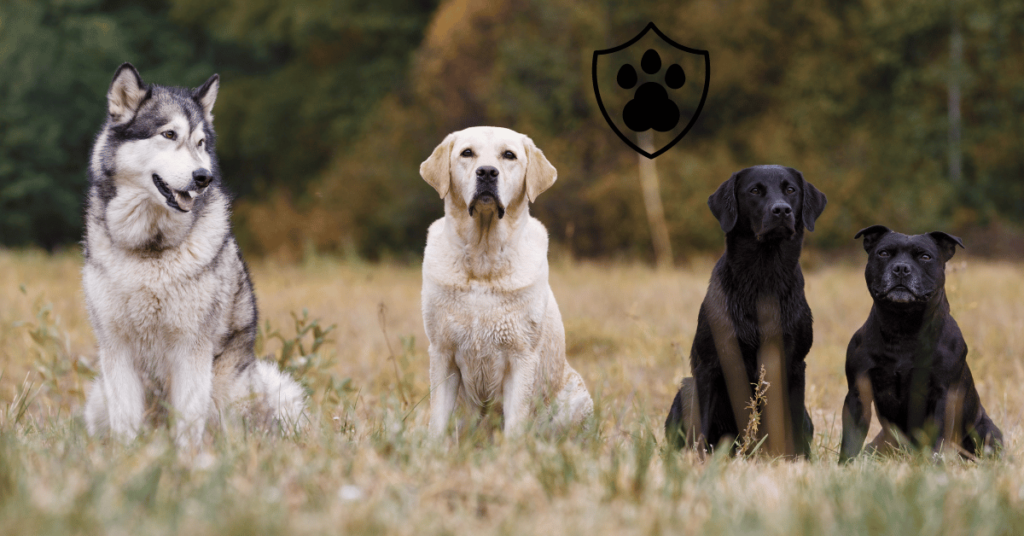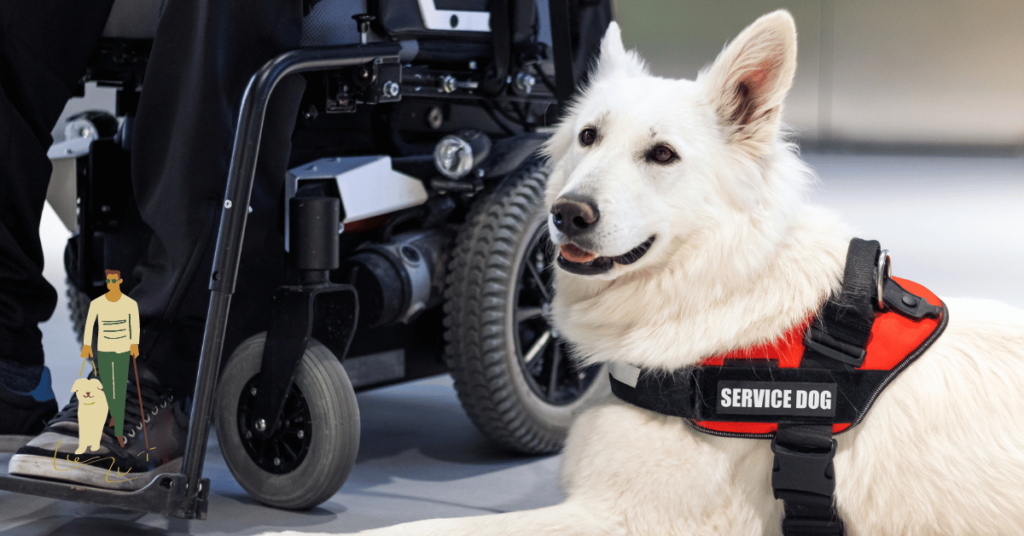Dogs bring immense joy to our lives, but they also come with responsibilities. One of those is ensuring they have the proper insurance coverage. While it may be tempting to forgo insurance, especially if you think your dog would never hurt anyone, it’s important to consider the potential risks. Every year in the United States, 4.5 million people are bitten by dogs, and of those, one in five requires medical attention. Without insurance, a dog-related incident could cost you tens of thousands of dollars.
In this article, we will explore why some dog breeds are more likely to need insurance, the breeds most commonly associated with liability claims, and how to save on insurance for your furry friend.
Why Do Some Dogs Need Insurance?
Pet insurance provides financial protection against unexpected expenses like vet bills, surgeries, or even lawsuits resulting from your dog’s behavior. While any dog can benefit from health insurance, certain breeds, often labeled as “aggressive,” might also need liability coverage.
Many homeowner or renter insurance policies offer some liability coverage for pets, but they often exclude specific breeds. In addition, some states have breed-specific legislation (BSL), requiring insurance coverage for certain breeds, or landlords may require tenants to have separate pet insurance. If your dog causes harm or property damage and isn’t covered by your insurance, you could face significant financial liability.
Health Insurance vs. Liability Insurance
Health insurance for dogs covers medical care, like vet visits, medications, and surgeries. Liability insurance, on the other hand, helps cover the cost if your dog injures someone or damages property. Both types of insurance are important, but dogs considered more prone to aggression or health issues may especially benefit from comprehensive coverage.
Top Dog Breeds That Need Insurance the Most

Some dog breeds are more likely to be excluded from standard insurance policies due to their reputation or history of aggressive behavior. Below are some of the breeds most commonly excluded from coverage and why they might require special insurance.
1. Akita
Akitas are strong dogs, with a bite force ranging from 350 to 400 pounds per square inch (PSI). This powerful bite makes them a potential liability risk if they were to bite someone. Additionally, they have one of the lowest passing rates in temperament tests, indicating they may not always be the most well-mannered. Due to these factors, Akitas are often excluded from insurance policies.
Moreover, Akitas are prone to health problems like hip dysplasia, so pet insurance can help cover costly medical treatments.
2. Alaskan Malamute
Alaskan Malamutes have a relatively high temperament test passing rate of 84.4%, but they are still banned by about 26% of insurance companies. This breed is also prone to health issues like bloat, a life-threatening condition that can require expensive surgery, making health insurance a valuable asset.
3. American Staffordshire Terrier (AmStaff)
The American Staffordshire Terrier is often grouped with “pit bull” breeds. Despite their generally tolerant temperament, their association with dogfighting has resulted in many insurance companies banning them. AmStaffs can also suffer from health issues like hypothyroidism and elbow dysplasia, making both health and liability insurance important.
4. Bulldogs
Bulldogs, including American and English Bulldogs, are responsible for many of the most severe dog bites. Additionally, Bulldogs suffer from various health issues due to their brachycephalic (short-nosed) anatomy, which can lead to respiratory problems, eye issues, and more. Treating these health concerns can be costly, and pet insurance can help mitigate these expenses.
5. Cane Corso
Cane Corsos are large, powerful dogs with a bite force of 700 PSI. Though they can be gentle giants, they are often blacklisted by insurance companies. They also have health issues like epilepsy and gastric dilatation-volvulus (bloat), making them good candidates for both health and liability insurance.
6. Chow Chow
Chow Chows have one of the lowest temperament test passing rates, with nearly 30% failing the American Temperament Test. As a result, they are banned by a vast majority of insurance companies. They are also prone to health conditions like hypothyroidism, which can be costly to treat.
7. Doberman Pinscher
Dobermans are often seen as aggressive, and more than 20% fail the official temperament test. They are banned from most insurance policies. Dobermans are also prone to von Willebrand disease, a bleeding disorder, and other health issues like heart disease and cancer. Pet insurance can be vital in covering these health costs.
8. German Shepherd
German Shepherds are highly intelligent and often serve as working dogs, but they rank fourth among breeds most likely to bite. In addition, they are prone to health issues such as hip dysplasia and gastrointestinal problems, both of which can require expensive treatments.
9. Labrador Retriever
Though often seen as friendly family dogs, Labradors are responsible for a significant number of dog bite claims, particularly involving children. They are also susceptible to health problems like hip dysplasia and eye conditions, making them strong candidates for health insurance.
10. Rottweiler
Rottweilers are another breed known for their strength, with a bite force of 328 PSI. They are often banned from standard insurance policies and are prone to expensive health conditions like heart disease. Pet insurance can be a wise investment to cover unexpected vet bills.
Additional Breeds That May Need Insurance
Other breeds that might be excluded from standard insurance policies include:
- Dachshund
- Golden Retriever
- Great Dane
- Jack Russell Terrier
- Mastiff
- Presa Canario
- Saint Bernard
- Siberian Husky
- Wolf hybrids
Smaller breeds like Chihuahuas can also be aggressive, contributing to nearly 5% of dog bite claims involving children. Though they may not cause as much physical damage, liability insurance can still be valuable.
Factors That Increase the Need for Dog Insurance

Age
Puppies, even those in good health, can benefit from insurance. Not only can it cover unexpected medical issues, but young dogs are also more likely to cause property damage or accidental injuries, which could be covered by liability insurance.
Environment
Dogs that spend time outdoors or in public areas may have a higher risk of biting someone or another animal. If you live in a state with a high rate of dog bite incidents, such as California, Florida, Texas, or New York, liability insurance is particularly important.
Behavioral Issues
Any dog, regardless of breed, with a history of aggressive behavior presents a financial risk. In these cases, insurance can help cover both medical costs and liability claims.
Is Dog Insurance Worth It?
Given the rising costs of both medical care for pets and liability claims related to dog bites, dog insurance is becoming an increasingly important investment. The average dog bite claim in cost over $50,000, and emergency vet visits can easily exceed $5,000.
For breeds prone to health issues or aggressive behavior, insurance provides peace of mind by covering both medical bills and potential lawsuits.
How to Save Money on Dog Insurance
To save on dog insurance, look for providers that do not exclude your dog’s breed. Additionally, some companies offer bundled discounts when you combine pet insurance with home insurance. Major insurers like State Farm, Liberty Mutual, Allstate, Geico, and Farmers offer bundling options that can help reduce costs.
Conclusion
- Some dog breeds are more likely to be excluded from insurance due to their reputation for aggression or higher medical costs.
- Health and liability insurance can protect both your dog’s well-being and your financial security.
- Factors like breed, age, and environment play a role in determining whether your dog needs insurance.
- Bundling policies and shopping around can help you save on insurance premiums.
Ultimately, insuring your dog is a smart decision that can protect you from unexpected expenses and ensure your dog receives the best possible care.
So that was all about this article. If you have any further questions feel free to comment down below. We are always here to help you!




